
Beatriz Esguerra Arte will present at ARTBO 2022 a dialogue between organic abstraction and figuration. Figurative, poetic and narrative artists Pedro Ruiz, Teresa Currea and Pablo Arrazola will dialogue with organic abstract artists Luis Luna, Jerónimo Villa and Carol Young. The diverse backgrounds and generations of these artists will bring a variety of artistic perspectives, which will be tied together curatorially and give the public a cohesive and enriching experience.
Pedro Ruiz, an important Colombian painter, addresses social issues including nature conservation, that concern us all. His avant-garde manner of conceiving his works takes painting as its starting point and extends to installations and participation of the public within the work. This brings further impact and effectiveness to his message.
Pablo Arrazola and Terea Currea are young artists specializing in drawing and work on paper. Highly skilled in their drawing techniques, both manipulate paper to create surreal and symbolic universes, cutting it, tearing it or creating textures.
Luis Luna, Carol Young and Jerónimo Villa are three organic abstract artists. Luis Luna will present his most recent work where he decomposes drawings on paper to recompose them in a woven form. The results are delicate tapestries that float in space. Carol Young, whose latest work captures the “sounds” of nature, will exhibit wall sculptures with curved, organic lines that become drawings in space. Jerónimo Villa, the youngest artist in the group, creates two-dimensional, almost sculptural works made from sandpaper. The results are works with a lot of force and movement.
Line and drawing, whether on paper or in space, paper, two-dimensional or used in three-dimensional works, and the delicacy in the execution of the work of these six artists are the values that tie this exhibition together. Beatriz Esguerra Arte believes in Colombian art, its poetry, passion, stories and exceptional quality, and is a constant ambassador in the different international events it attends.
nternationally. The gallery is committed to fostering the careers of its represented artists, from emerging to established, through carefully curated projects, exhibitions, publications, art fair participation in the US and Latin America, and joint ventures with American galleries.
BEA provides consultation and services in commercializing art, curating exhibits and collections and organizing art events. Its webpage, www.beatrizesguerra-art.com, is continually updated with the gallery's and artists' exhibits and activities, works available for sale, and local and international art market news.
Permanence, transcendence, intelligence, aesthetics, harmony and skill, are the values that BEA looks for in art. Art should enrich both the soul and mind, in that order. With an academic training in art history and more than 30 years experience in the field, Beatriz Esguerra, director of Beatriz Esguerra Art, has always abided by her mission: to enrich lives through art, with integrity and professionalism.
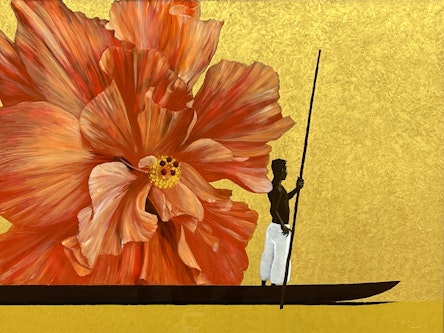
Pedro Ruiz's work occupies itself with social and political issues that affect countries worldwide. Nature and the concept that it is a force that we cannot control and must live in harmony with, is ever-present in his works. Ruiz has developed four fundamental series through paintings and installations: Love is in the Air, Displacements, Gold, and Colombiana Light. Pedro Ruiz is today one of Colombia’s most important artists. Knighted by the French Government with the Order of the Arts and Letters and Ambassador to Unicef for his strong commitment to translating his artistic messages into social projects, Ruiz has the ability of connecting with the public’s minds and hearts. In a poetic and aesthetic manner, this artist addresses political and social issues that have affected him, his country and the world: social displacement, the spraying of drug crops and its effect on nature, aggressive mining and destruction of nature by multinational companies and its effect on the rural population and the contrast between urban and rural living, among other themes. Pedro Ruiz develops his works through projects. He is an outstanding painter and sculptor and uses his academic foundations to develop artistic projects that are edgy and contemporary. It is this successful combination, that has placed him as one of Latin America’s rising stars. In recent years his project “Gold, A Spirit of Nature and Territory” has traveled to many countries (see CV) stirring the public’s inner most feelings and impacting these countries’ artistic communities. Two beautiful coffee table books have been published covering the rich evolution of his career.
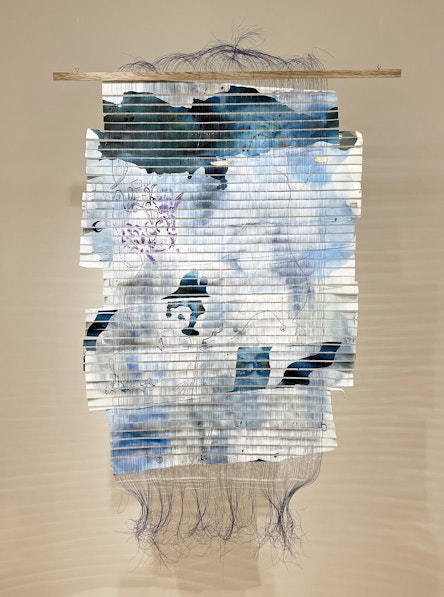
Luis Luna opens the locks, crosses time, his imagination overflows with stories, alchemical diagrams, route maps, theories of the universe. His affinity with quantum physics approaches lead him to explore universes where everything is possible, where everything can coexist and where everything is connected. In his garden he congregates, he multiplies the image, inverts it, enlarges or diminishes it as if it were in a mirror, modulates various artistic practices to transcend the particular and make the surrounding spaces habitable, even for an instant. Maria Elvira Ardila Curator
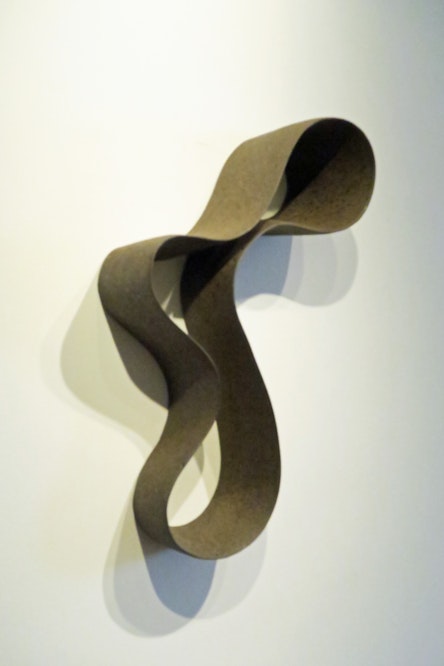
Using ceramics as her primary medium, Carol Young’s installations and sculptures transcend the standard perception of the material, creating work that is unique, challenging and beautiful. Her relationship with ceramics is intimate, the creation of her pieces, intuitive. She has the ability to emulate the organic, to mold and manipulate the material, producing objects that could almost appear in nature. However, Carol Young’s work cannot exist on its own. It relies on the attention, the contemplation of the viewer; for it is them who will ultimately endow these forms with meaning.
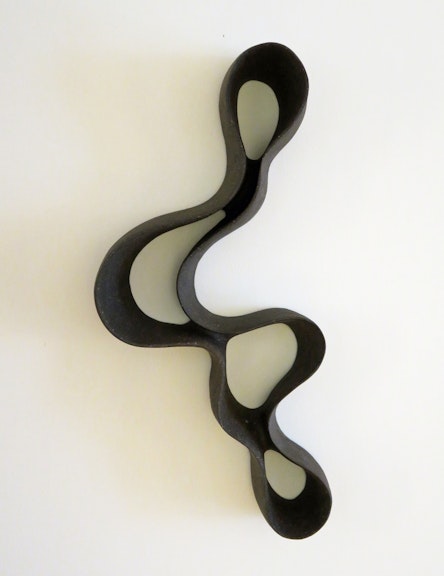
Using ceramics as her primary medium, Carol Young’s installations and sculptures transcend the standard perception of the material, creating work that is unique, challenging and beautiful. Her relationship with ceramics is intimate, the creation of her pieces, intuitive. She has the ability to emulate the organic, to mold and manipulate the material, producing objects that could almost appear in nature. However, Carol Young’s work cannot exist on its own. It relies on the attention, the contemplation of the viewer; for it is them who will ultimately endow these forms with meaning.

In Jeronimo Villa's work, three major subjects emerge: impossibility, time and death. Impossibility is depicted by means of denying function and highlighting that which is impossible, chronicling tensions and glorifying contrasts. Time and death are expressed by rescuing found objects from neglect and oblivion. This results in volumetric pieces composed of materials and stories, that tend to convey a certain nostalgia for their former self. Jeronimo Villa adopts derelict objects, intervenes their shape and their forgotten function, and puts together structures where geometry is clearly expressed. He often finds his raw materials in the street. More than being just abandoned, these objects bear scars of human violence, of the elements’ impact, and of the nature of the material. They seem resolved to cease being themselves and become the friction between time and oblivion. Next to a sewer, lying against a lamp pole or sharing the space with the stench of urine, the collection of these nameless objects is curated mostly by passion. They are gradually included in an inventory that is free from disdain and which negates desolation. The liaison between life and death is the conceptual backbone of the work. It is the source from where it evolves. Found objects were dead in life and now are celebrated and implemented within a sculptural and conceptual process. Chairs, furniture, blinds, tree-trunks, windows and an assortment of intervened objects are frozen in time. Some others are embedded or have had things embedded in them, like a memory that is lodged in time. Books, strings, wood, paint and fire, a full dialogue between materials and objects. The work embraces the nameless objects and baptizes them with a new order that converses with space and offers mature narratives; an order that is consolidated in sculpture, in painting, and mostly, in poetry. The object is now a memory, a past that is engraved in the work. Time has stopped and left behind still scenes that elude death and recount just a tiny fraction of what they have ceased to be. In different ways, and through different means, the work expresses a longing for a time gone by, like the function that is no more, or the scar that the past left on the material.

In Jeronimo Villa's work, three major subjects emerge: impossibility, time and death. Impossibility is depicted by means of denying function and highlighting that which is impossible, chronicling tensions and glorifying contrasts. Time and death are expressed by rescuing found objects from neglect and oblivion. This results in volumetric pieces composed of materials and stories, that tend to convey a certain nostalgia for their former self. Jeronimo Villa adopts derelict objects, intervenes their shape and their forgotten function, and puts together structures where geometry is clearly expressed. He often finds his raw materials in the street. More than being just abandoned, these objects bear scars of human violence, of the elements’ impact, and of the nature of the material. They seem resolved to cease being themselves and become the friction between time and oblivion. Next to a sewer, lying against a lamp pole or sharing the space with the stench of urine, the collection of these nameless objects is curated mostly by passion. They are gradually included in an inventory that is free from disdain and which negates desolation. The liaison between life and death is the conceptual backbone of the work. It is the source from where it evolves. Found objects were dead in life and now are celebrated and implemented within a sculptural and conceptual process. Chairs, furniture, blinds, tree-trunks, windows and an assortment of intervened objects are frozen in time. Some others are embedded or have had things embedded in them, like a memory that is lodged in time. Books, strings, wood, paint and fire, a full dialogue between materials and objects. The work embraces the nameless objects and baptizes them with a new order that converses with space and offers mature narratives; an order that is consolidated in sculpture, in painting, and mostly, in poetry. The object is now a memory, a past that is engraved in the work. Time has stopped and left behind still scenes that elude death and recount just a tiny fraction of what they have ceased to be. In different ways, and through different means, the work expresses a longing for a time gone by, like the function that is no more, or the scar that the past left on the material.
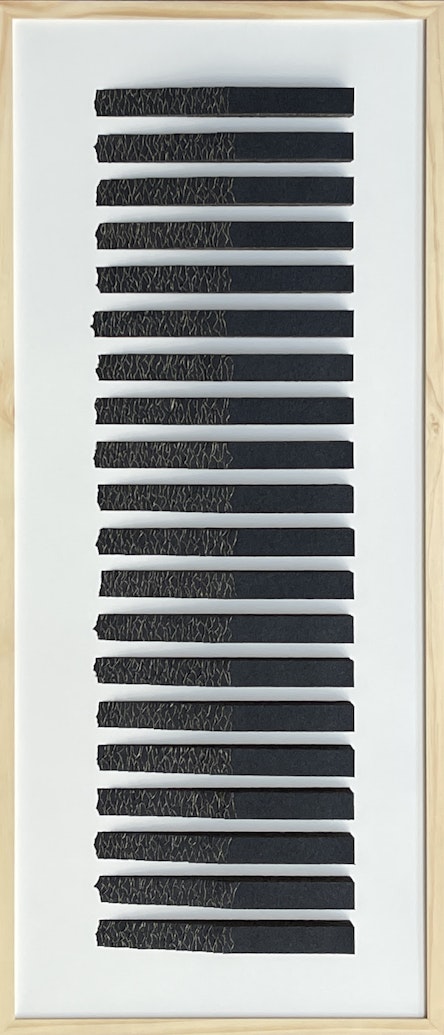
In Jeronimo Villa's work, three major subjects emerge: impossibility, time and death. Impossibility is depicted by means of denying function and highlighting that which is impossible, chronicling tensions and glorifying contrasts. Time and death are expressed by rescuing found objects from neglect and oblivion. This results in volumetric pieces composed of materials and stories, that tend to convey a certain nostalgia for their former self. Jeronimo Villa adopts derelict objects, intervenes their shape and their forgotten function, and puts together structures where geometry is clearly expressed. He often finds his raw materials in the street. More than being just abandoned, these objects bear scars of human violence, of the elements’ impact, and of the nature of the material. They seem resolved to cease being themselves and become the friction between time and oblivion. Next to a sewer, lying against a lamp pole or sharing the space with the stench of urine, the collection of these nameless objects is curated mostly by passion. They are gradually included in an inventory that is free from disdain and which negates desolation. The liaison between life and death is the conceptual backbone of the work. It is the source from where it evolves. Found objects were dead in life and now are celebrated and implemented within a sculptural and conceptual process. Chairs, furniture, blinds, tree-trunks, windows and an assortment of intervened objects are frozen in time. Some others are embedded or have had things embedded in them, like a memory that is lodged in time. Books, strings, wood, paint and fire, a full dialogue between materials and objects. The work embraces the nameless objects and baptizes them with a new order that converses with space and offers mature narratives; an order that is consolidated in sculpture, in painting, and mostly, in poetry. The object is now a memory, a past that is engraved in the work. Time has stopped and left behind still scenes that elude death and recount just a tiny fraction of what they have ceased to be. In different ways, and through different means, the work expresses a longing for a time gone by, like the function that is no more, or the scar that the past left on the material.
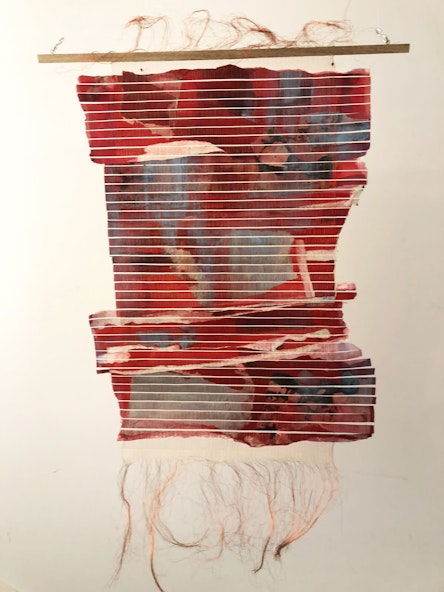
Luis Luna opens the locks, crosses time, his imagination overflows with stories, alchemical diagrams, route maps, theories of the universe. His affinity with quantum physics approaches lead him to explore universes where everything is possible, where everything can coexist and where everything is connected. In his garden he congregates, he multiplies the image, inverts it, enlarges or diminishes it as if it were in a mirror, modulates various artistic practices to transcend the particular and make the surrounding spaces habitable, even for an instant. Maria Elvira Ardila Curator

Luis Luna opens the locks, crosses time, his imagination overflows with stories, alchemical diagrams, route maps, theories of the universe. His affinity with quantum physics approaches lead him to explore universes where everything is possible, where everything can coexist and where everything is connected. In his garden he congregates, he multiplies the image, inverts it, enlarges or diminishes it as if it were in a mirror, modulates various artistic practices to transcend the particular and make the surrounding spaces habitable, even for an instant. Maria Elvira Ardila Curator

Pedro Ruiz's work occupies itself with social and political issues that affect countries worldwide. Nature and the concept that it is a force that we cannot control and must live in harmony with, is ever-present in his works. Ruiz has developed four fundamental series through paintings and installations: Love is in the Air, Displacements, Gold, and Colombiana Light. Pedro Ruiz is today one of Colombia’s most important artists. Knighted by the French Government with the Order of the Arts and Letters and Ambassador to Unicef for his strong commitment to translating his artistic messages into social projects, Ruiz has the ability of connecting with the public’s minds and hearts. In a poetic and aesthetic manner, this artist addresses political and social issues that have affected him, his country and the world: social displacement, the spraying of drug crops and its effect on nature, aggressive mining and destruction of nature by multinational companies and its effect on the rural population and the contrast between urban and rural living, among other themes. Pedro Ruiz develops his works through projects. He is an outstanding painter and sculptor and uses his academic foundations to develop artistic projects that are edgy and contemporary. It is this successful combination, that has placed him as one of Latin America’s rising stars. In recent years his project “Gold, A Spirit of Nature and Territory” has traveled to many countries (see CV) stirring the public’s inner most feelings and impacting these countries’ artistic communities. Two beautiful coffee table books have been published covering the rich evolution of his career.
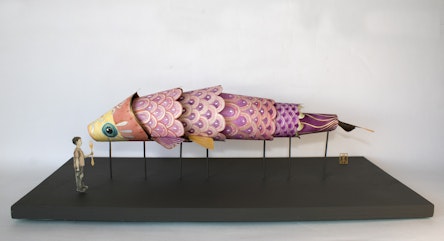
Teresa Currea’s delicate creations juxtapose carefully cut out drawings -made with lead and colored pencils, ink, and watercolor on paper-, hand-made ceramic pieces and found objects such as light bulbs and wall sockets. Currea creates surreal multidimensional worlds within acrylic boxes and frames that poetically take the spectator on an imaginary journey. In these pieces, reality and fantasy intertwine, as relationships between apparent opposites and encounters that make no sense, present us with possible realms and question our notions of what reality consists of.

Teresa Currea’s delicate creations juxtapose carefully cut out drawings -made with lead and colored pencils, ink, and watercolor on paper-, hand-made ceramic pieces and found objects such as light bulbs and wall sockets. Currea creates surreal multidimensional worlds within acrylic boxes and frames that poetically take the spectator on an imaginary journey. In these pieces, reality and fantasy intertwine, as relationships between apparent opposites and encounters that make no sense, present us with possible realms and question our notions of what reality consists of.
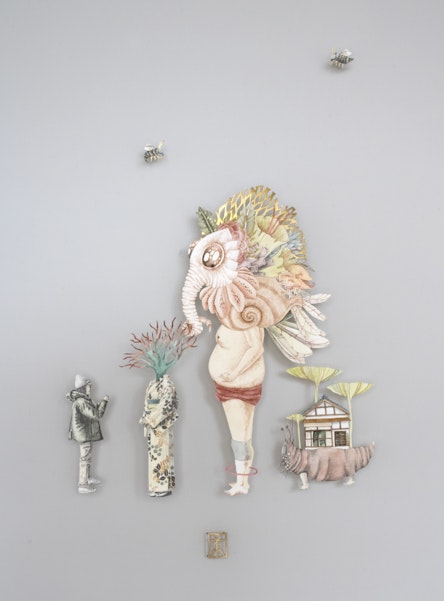
Teresa Currea’s delicate creations juxtapose carefully cut out drawings -made with lead and colored pencils, ink, and watercolor on paper-, hand-made ceramic pieces and found objects such as light bulbs and wall sockets. Currea creates surreal multidimensional worlds within acrylic boxes and frames that poetically take the spectator on an imaginary journey. In these pieces, reality and fantasy intertwine, as relationships between apparent opposites and encounters that make no sense, present us with possible realms and question our notions of what reality consists of.

THE ROLE OF PAPER; THE WORK OF PABLO ARRÁZOLA By Natalia Vega Art historian and critic During the last few decades, the boundaries of what drawing is and can mean have expanded considerably. The young Colombian artist Pablo Arrázola (Bogotá, Colombia, 1991) participates in this development by juxtaposing two modes of language in dialogue: the traditional figurative mode, characteristic of descriptive and realistic representation -limited to the use of the most basic and traditional tools- and the innovative, experimental and abstract mode in which paper is manipulated with a wide number of tools. Arrázola engages with the paper-formally and significantly, activating it by applying various actions of mark-making such as cutting, tearing, scratching, scraping, and rubbing. These actions produce a wide range of elements -such as clean and straight lines, irregular lines, textures, and reliefs-that transform the white paper, which traditionally had been considered solely as support, into a field of action. These interventions result in an array of features that expand the limits of the language and feature characteristics belonging to varied media such as drawing, painting, engraving, and sculptural bas-relief. By manipulating paper as a tactile material and not using it strictly as a surface, he introduces the physical reality of the third dimension and the imaginary reality of an inhabited environmental space. Drawing has been used by many contemporary artists to explore issues related to various constructions of identity; in this case, the depicted children do not constitute specific or real portraits but, rather, generic representations which help the artist explore the most neglected topic of childhood in art, and to address the conceptualization of this stage of life in consonance with current interests within social and cultural studies. In antiquity, the status of childhood was similar to that of women and slaves, discriminated against, and treated as minorities. In subsequent periods children were portrayed in art as miniature adults, going through a preparatory stage that ought to be accelerated. Recently, the intrinsic importance of their experiences, cognitive development, and ability of creative agency has been recognized. In Arrázola's work, the depicted children manifest themselves not only as independent and complete beings but also invoke through the traces or marks that each character leaves in the environment they inhabit-the ordering interaction of the world and the transformation of space, characteristic of human beings at any age. The paper materializes the metaphor of the blank sheet of paper alluding to the potential of life itself. It also constitutes the field of action of homo ludens, the man who plays, creating an equivalence between art and life where the children represented fulfill an alter ego function in the performing of the artist's actions. The various strategies of drawing Arrázola employs simultaneously lead us to multiple levels of signification alluding to childhood, the practice of art, the perception of the viewer, and additionally manifests that life itself is-like paper-a field for exploratory action and constant re-creation.

THE ROLE OF PAPER; THE WORK OF PABLO ARRÁZOLA By Natalia Vega Art historian and critic During the last few decades, the boundaries of what drawing is and can mean have expanded considerably. The young Colombian artist Pablo Arrázola (Bogotá, Colombia, 1991) participates in this development by juxtaposing two modes of language in dialogue: the traditional figurative mode, characteristic of descriptive and realistic representation -limited to the use of the most basic and traditional tools- and the innovative, experimental and abstract mode in which paper is manipulated with a wide number of tools. Arrázola engages with the paper-formally and significantly, activating it by applying various actions of mark-making such as cutting, tearing, scratching, scraping, and rubbing. These actions produce a wide range of elements -such as clean and straight lines, irregular lines, textures, and reliefs-that transform the white paper, which traditionally had been considered solely as support, into a field of action. These interventions result in an array of features that expand the limits of the language and feature characteristics belonging to varied media such as drawing, painting, engraving, and sculptural bas-relief. By manipulating paper as a tactile material and not using it strictly as a surface, he introduces the physical reality of the third dimension and the imaginary reality of an inhabited environmental space. Drawing has been used by many contemporary artists to explore issues related to various constructions of identity; in this case, the depicted children do not constitute specific or real portraits but, rather, generic representations which help the artist explore the most neglected topic of childhood in art, and to address the conceptualization of this stage of life in consonance with current interests within social and cultural studies. In antiquity, the status of childhood was similar to that of women and slaves, discriminated against, and treated as minorities. In subsequent periods children were portrayed in art as miniature adults, going through a preparatory stage that ought to be accelerated. Recently, the intrinsic importance of their experiences, cognitive development, and ability of creative agency has been recognized. In Arrázola's work, the depicted children manifest themselves not only as independent and complete beings but also invoke through the traces or marks that each character leaves in the environment they inhabit-the ordering interaction of the world and the transformation of space, characteristic of human beings at any age. The paper materializes the metaphor of the blank sheet of paper alluding to the potential of life itself. It also constitutes the field of action of homo ludens, the man who plays, creating an equivalence between art and life where the children represented fulfill an alter ego function in the performing of the artist's actions. The various strategies of drawing Arrázola employs simultaneously lead us to multiple levels of signification alluding to childhood, the practice of art, the perception of the viewer, and additionally manifests that life itself is-like paper-a field for exploratory action and constant re-creation.

THE ROLE OF PAPER; THE WORK OF PABLO ARRÁZOLA By Natalia Vega Art historian and critic During the last few decades, the boundaries of what drawing is and can mean have expanded considerably. The young Colombian artist Pablo Arrázola (Bogotá, Colombia, 1991) participates in this development by juxtaposing two modes of language in dialogue: the traditional figurative mode, characteristic of descriptive and realistic representation -limited to the use of the most basic and traditional tools- and the innovative, experimental and abstract mode in which paper is manipulated with a wide number of tools. Arrázola engages with the paper-formally and significantly, activating it by applying various actions of mark-making such as cutting, tearing, scratching, scraping, and rubbing. These actions produce a wide range of elements -such as clean and straight lines, irregular lines, textures, and reliefs-that transform the white paper, which traditionally had been considered solely as support, into a field of action. These interventions result in an array of features that expand the limits of the language and feature characteristics belonging to varied media such as drawing, painting, engraving, and sculptural bas-relief. By manipulating paper as a tactile material and not using it strictly as a surface, he introduces the physical reality of the third dimension and the imaginary reality of an inhabited environmental space. Drawing has been used by many contemporary artists to explore issues related to various constructions of identity; in this case, the depicted children do not constitute specific or real portraits but, rather, generic representations which help the artist explore the most neglected topic of childhood in art, and to address the conceptualization of this stage of life in consonance with current interests within social and cultural studies. In antiquity, the status of childhood was similar to that of women and slaves, discriminated against, and treated as minorities. In subsequent periods children were portrayed in art as miniature adults, going through a preparatory stage that ought to be accelerated. Recently, the intrinsic importance of their experiences, cognitive development, and ability of creative agency has been recognized. In Arrázola's work, the depicted children manifest themselves not only as independent and complete beings but also invoke through the traces or marks that each character leaves in the environment they inhabit-the ordering interaction of the world and the transformation of space, characteristic of human beings at any age. The paper materializes the metaphor of the blank sheet of paper alluding to the potential of life itself. It also constitutes the field of action of homo ludens, the man who plays, creating an equivalence between art and life where the children represented fulfill an alter ego function in the performing of the artist's actions. The various strategies of drawing Arrázola employs simultaneously lead us to multiple levels of signification alluding to childhood, the practice of art, the perception of the viewer, and additionally manifests that life itself is-like paper-a field for exploratory action and constant re-creation.

Pedro Ruiz's work occupies itself with social and political issues that affect countries worldwide. Nature and the concept that it is a force that we cannot control and must live in harmony with, is ever-present in his works. Ruiz has developed four fundamental series through paintings and installations: Love is in the Air, Displacements, Gold, and Colombiana Light. Pedro Ruiz is today one of Colombia’s most important artists. Knighted by the French Government with the Order of the Arts and Letters and Ambassador to Unicef for his strong commitment to translating his artistic messages into social projects, Ruiz has the ability of connecting with the public’s minds and hearts. In a poetic and aesthetic manner, this artist addresses political and social issues that have affected him, his country and the world: social displacement, the spraying of drug crops and its effect on nature, aggressive mining and destruction of nature by multinational companies and its effect on the rural population and the contrast between urban and rural living, among other themes. Pedro Ruiz develops his works through projects. He is an outstanding painter and sculptor and uses his academic foundations to develop artistic projects that are edgy and contemporary. It is this successful combination, that has placed him as one of Latin America’s rising stars. In recent years his project “Gold, A Spirit of Nature and Territory” has traveled to many countries (see CV) stirring the public’s inner most feelings and impacting these countries’ artistic communities. Two beautiful coffee table books have been published covering the rich evolution of his career.
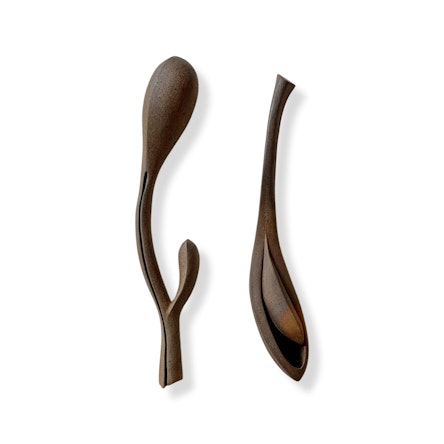
Using ceramics as her primary medium, Carol Young’s installations and sculptures transcend the standard perception of the material, creating work that is unique, challenging and beautiful. Her relationship with ceramics is intimate, the creation of her pieces, intuitive. She has the ability to emulate the organic, to mold and manipulate the material, producing objects that could almost appear in nature. However, Carol Young’s work cannot exist on its own. It relies on the attention, the contemplation of the viewer; for it is them who will ultimately endow these forms with meaning.